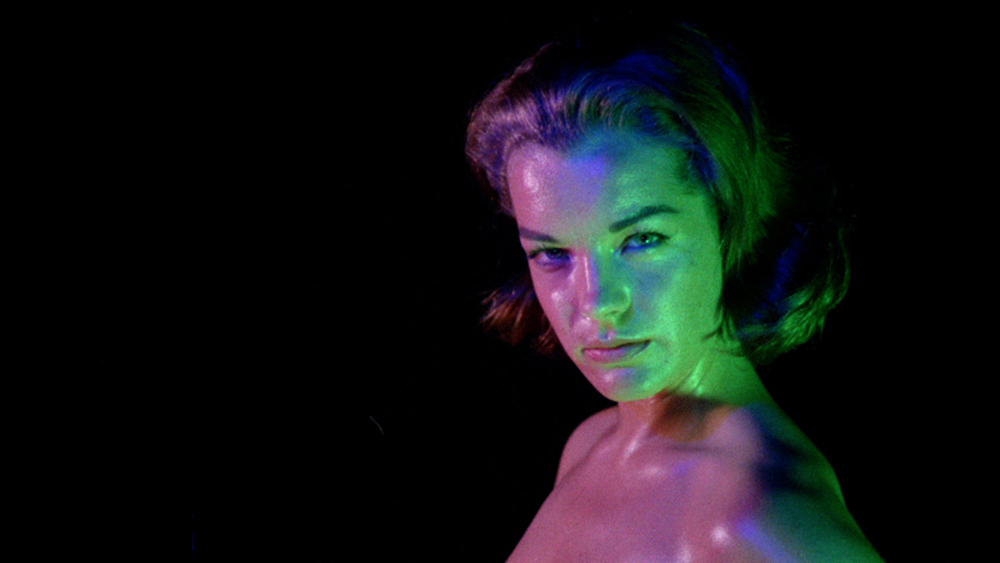2022.08.09
optical incarnation
The image of ``Inferno'' was directly influenced by the op art and kinetic art, which transformed matter through vision and illusion, which were popular at the time. The audience is not just a consumer of images, but also transforms the images that come into view through the experience through the screen. Op art and kinetic art, which acquire new perspectives by exploring the principles of vision and illusions, overlap with the image of Marcel, whose world changed before his eyes due to intense jealousy. In Marcel's world, even the speed of sound that enters our ears changes. And once a wound is opened, it never heals. This work depicts the world as seen from Marcel's ``third eye,'' the wound.
What is interesting is that the imagery in ``Inferno'' straddles Op Art and Kinetic Art, and references images from the ``pure cinema'' of the 1920s. The kaleidoscope-like images and erotic images of lips are reminiscent of ``Ballet Mechanic'' (24), for which Man Ray was the cameraman. The railway bridge scene where a train approaches Odette, who is lying shirtless on the tracks, references the image of a railway bridge in Henri Chomet's Reflections of Light and Speed (25). Clouzot traces its history through the latest art and explores the principles of film. Clouzot, who was inspired by Federico Fellini's ` `8½ '' (63) as a new kind of cinema, was very impressed by the fact that he sought in ``pure cinema'' the kind of holiness that drives movies and the motivation to make them. Interesting. This is because the works of ``Purity Movies'' are overflowing with the primitive joy of a child playing with a toy called a camera.

“Inferno” ©2009 Lobster Films / France 2 Cinema
The flickering of light in this work is not only a sexual symbol, but also the source of the metamorphosis that passes through Romy Schneider's body. A body that mutates. An optical incarnation, so to speak. These images include Nicolas Winding Refn's `` The Neon Demon '' (2016), Francis Ford Coppola's ``Virginia'' (11), and Edgar Wright's ` `Last Night in Soho' ' (2011). 21) (in both The Neon Demon and Virginia , Elle Fanning plays the embodiment of optical metamorphosis!). Odette's body is invaded and eroded by light. Odette's devilish smile is so innocent that it even resembles an angel.
The geometric patterns and optical body projected onto Odette-Romy Schneider's body are a work that follows ``Inferno'' and are the ideas behind Clouzot's final work, `` The Captive Woman '' (68). It is used as. The art dealer in `` The Captive Woman '' closes one eye alternately to confirm the difference in the world that his right and left eyes perceive. `` Captive Woman '' can be said to be a work that incorporates the concept of art itself, rather than an Op Art or Kinetic Art object. The sadistic surge of excitement with which Maurice, an artist, takes pictures of his models is somewhat reminiscent of the camera eye directed at Romy Schneider in the camera test in Inferno. A sadistic gaze known as the camera eye. Regarding being on camera, Romy Schneider once said:
"But most of all, that camera eye chasing me. I feel like a hare with a gun pointed at me."*1


